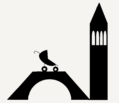CAMPO LIFE
(the squares of venice)

“Campo” is the name for the squares around Venice. “Campo” literally means “field” in Italian because hundreds of years ago they used to be just that! They grew food here, some were used for grazing animals, and often the community would flock there to celebrate during festivals. Now they are used in similar ways, with a modern twist of course! Grazing animals have been replaced by dogs out for their daily walk and the locals still use them as a location to play games and socialize.
After school we always take the kids to the campo for a play. For all Venetian kids the campo is their playground. If you go into any square after school you will find them whizzing around on scooters or drawing in chalk on the floor. Some families bring out plastic chairs and everyone sits outside eating snacks. If the campo is particularly smooth you might even see some children roller-blading (like in Campo S. Giacomo dell’Orio). Football games usually continue into the evening, especially on warm spring or autumn days. Most houses don’t have gardens and the campo is sometimes the only place that kids can play outside. As with many things in Venice, some tourists think this is some kind of show put on specifically for their entertainment and take photos of the kids as if it’s a zoo or Disney land.
In most squares you are bound to find at least one or more cafes, bars, or restaurants with outdoor seating. We love to grab a table and a spritz while the kids are playing (though most Venetians usually just bring their own snacks). We love going to the campo and hearing all the local gossip – it’s an essential part of Venetian life! Many of the squares have a different feel – Campo Santa Margherita is often filled with students from the nearby university and Campo San Polo has a market at Christmas and even an ice rink. If your kids want to join the fun with the local school children, take them to Campo S. Giacomo dell’Orio, Campo Santa Margherita, or Campo Santa Maria Formosa about 5pm or one of the smaller squares like Campo Bandiera or Campo San Toma. Many a time our visitors’ children have been welcomed into a game of football even though they don’t speak the same language as the local kids.

